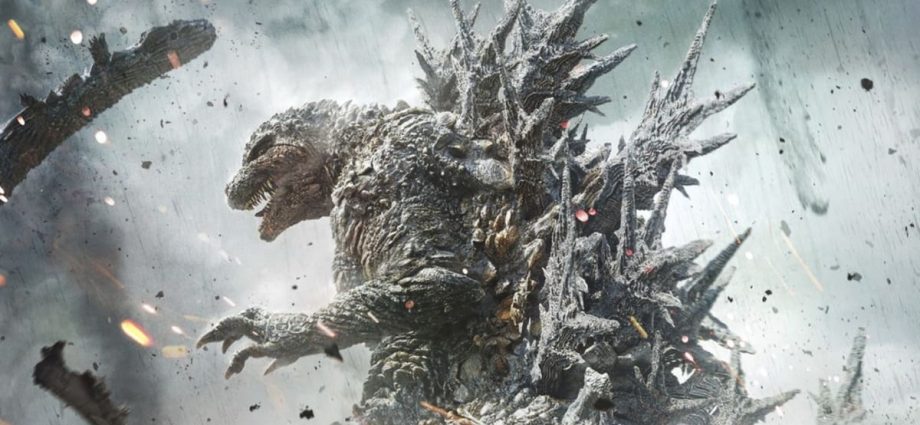
“Quite frankly, I wasn’t looking at the world when we set out to make this movie,” Yamazaki said in a recent interview. “A lot of our team members said, ‘Oh, it’s Godzilla, The whole world is going to see this. You have to treat it differently.’ I told them all: ‘This is a small budget film made for a certain audience.’ They’ve proved me wrong and I’m very happy that they did.”
Much has been made of the pairing of Oppenheimer and Barbie, but the better double feature for Christopher Nolan’s film might be Godzilla Minus One. Across seven decades of movies, Godzilla has been deployed in a variety of ways. But Godzilla Minus One returns to the essential nature of Godzilla as a sober symbol of nuclear holocaust and atomic trauma.
In the 1954 original, Godzilla is woken by hydrogen-bomb testing. Producer Tomoyuki Tanaka once said: “The theme of the film, from the beginning, was the terror of the bomb. Mankind has created the bomb, and now nature was going to take revenge on mankind.”
Ironically, that Godzilla didn’t reach American audiences at the time. The version released in the US was heavily edited and stripped of much of political themes. Raymond Burr, a Canadian actor, was inserted in new footage.
For some Western moviegoers, Godzilla Minus One is a truer introduction of Godzilla, one of the movies’ greatest and grandest metaphors, than ever before.
“One of the many interpretations of Godzilla, through the evolution of the series of films over the years, has been forgotten – which is the original interpretation,” says Yamazaki. “Given the current state of affairs, what the world is going through right now, I thought it was very important that message not be forgotten. My intent was to put a spotlight on what Godzilla represented.”
In Godzilla Minus One, just as WWII is ending, Godzilla is growing. He begins appearing off the coast of Tokyo. For a kamikaze pilot Koichi (Ryunosuke Kamiki), who didn’t kill himself in battle, confronting Godzilla offers a chance for redemption. When Koichi returns to Japan, he finds his parents dead and the city in ruins. Meanwhile, American bomb tests on Bikini Atoll are fuelling Godzilla’s power.
Recent Hollywood versions of Godzilla have put the kaiju into less Japan-centric contexts. The last was 2021’s Godzilla Vs Kong. Legendary Pictures, which licenses the character from Toho, will on Mar 29 release with Warner Bros Godzilla x Kong: The New Empire. If not for its coming debut, Godzilla Minus One might still be playing in theatres. It bowed out of cinemas in late January after the one-week run of a black-and-white version.
But unlike more broadly blockbuster-styled Godzilla films, Godzilla Minus One is rigorously rooted in a Japanese perspective. Some have lamented that Oppenheimer, in staying close to J Robert Oppenheimer’s story, leaves out any Japanese experience of the bombs dropped on Hiroshima and Nagasaki. But what’s absent of Oppenheimer is everywhere in Godzilla Minus One.
Yamazaki has only seen an English version of Oppenheimer; the film hasn’t yet been released in Japan. But he believes it’s telling that both he and Nolan were separately drawn back to the dawn of the nuclear era.

